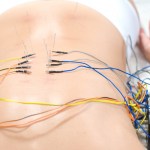obesity
I am excited to present this guest blog from Bridget Martinez, graduate student from the University of California, Merced. She has been studying elephant seals in the laboratory of Dr. Rudy Ortiz. She had presented her research at the 2015 Experimental Biology conference in Boston, MA which was mentioned in a prior blog . Here is her description of her research:.
---------
Bridget Martinez, Graduate Student, University of California - Merced
Northern elephant seals (Mirounga angustirostris) (NES) are fascinating mammals; they possess the incredible ability to fast for weeks without…
I was very impressed by the graduate and undergraduate students who presented their research at the Scholander poster competition sponsored by the Comparative and Evolutionary Physiology section of the American Physiological Society this afternoon. I am sure the winner of the competition will be very difficult to select.
Some highlights included:
Bridget Martinez, graduate student at the University of California - Merced whose research focused on hormonal changes that occur with fasting in elephant seal pups. In mammals, food deprivation leads to lower…
It’s a persistent conundrum in the field of public health — how can we open people’s minds to positively receiving and acting on health information? Previous research has found that combining health tips with messages of self-affirmation may be a particularly effective strategy, but researchers weren’t entirely sure how self-affirmation worked at the neurological level. Now, a new study has found that self-affirmation’s effects on a particular region of the brain may be a major key to behavior change.
In even simpler terms, researchers involved this new study — which examined how self-…
It’s not unusual for studies on community walkability to face the perplexing question of self-selection. In other words, people who already like to walk end up moving to walkable communities and so those communities naturally have higher physical activity rates. In even simpler terms, it’s about the person, not the environment. However, a new study finds that walkable community design does influence healthy behavior — even among people with no preference for walking in the first place.
Published in December in a supplement of the Preventive Medicine journal, the study examined changes in…
In ongoing public health efforts to curb the obesity epidemic, better menu and nutrition labeling is often tapped as a low-cost way to help make the healthy choice, the easy choice. And while the evidence on the effectiveness of such interventions is still emerging, a recent study found that educating young people on the calories in sugar-sweetened beverages did make a positive difference.
Published in the December issue of the American Journal of Public Health, the study focused on an experiment inside six corner stores located near middle and high schools within low-income, predominantly…
To all bits of clockwork that are adjusted in our bodies according to our day-night timetable, we can now add two more: cancer growth and the schedules of our internal complements of bacteria.
Cancer, according to a new Weizmann Institute study, may grow and spread more at night. In this scenario, our cells are getting messages left and right, day and night, and taking them in through the specialized receptors on their outer membranes. During the daytime, our bodies produce natural “wake-up” hormones, and these apparently, take precedence over other incoming messages, their receptors…
At this point, it’s pretty clear that soda is bad for your health. But a new study has found that it may be even worse than we thought.
Published yesterday in the American Journal of Public Health, the study found that drinking sugar-sweetened beverages may be associated with cell aging. More specifically, researchers studied the effect that soda has on telomeres, which are the protective units of DNA that cap the ends of chromosomes inside human cells. Previously, the length of telomeres within white blood cells has been tied to shorter lifespans as well as the development of chronic…
Building excitement around school meals with the help of guest chefs and fresh recipes could be a significant boon for school lunch programs as well as student eating habits, a new study found.
Recently published in the journal Appetite, the study examined the impact of Chefs Move to Schools, an initiative of First Lady Michelle Obama’s Let’s Move campaign. With an overriding goal of encouraging schoolchildren to make healthier meal choices, Chefs Move to Schools pairs volunteer professional chefs with schools to offer cooking education to kids as well as culinary advice to school food…
Could artificial sweeteners be helping cause the very thing they are supposed to prevent? They may well do so, and you can probably blame your microbiota – those masses of mostly-friendly bacteria that live in your gut. According to a paper by Weizmann Institute scientists that appeared today in Nature, artificial sweeteners not only encourage the wrong kind of bacteria to expand their numbers, they also induce mix-ups in the cross-communication between these bacteria and your body. Those mix-ups can lead to glucose intolerance – the first step toward metabolic syndrome and diabetes. So,…
During the past year, not one state experienced a decrease in adult obesity rates and, in fact, six states are home to even higher rates than before, according to a new report released today.
This morning, Trust for America’s Health (TFAH) and the Robert Wood Johnson Foundation (RWJF) released “The State of Obesity: Better Policies for a Healthier America,” finding that adult obesity rates rose in Alaska, Delaware, Idaho, New Jersey, Tennessee and Wyoming. Mississippi and West Virginia tied to take the unenviable top spot, both with an adult obesity rate of 35.1 percent, while Colorado is…
Image of electroacupuncture to the back from www.sandiegohealingarts.com
A new study published in AJP-Regulatory, Integrative and Comparative Physiology suggests that electroacupuncture to the abdominal region may prevent increases in blood sugar concentrations after a meal by affecting insulin sensitivity and circulating free fatty acid concentrations. Granted this is not comparative physiology research, I find it interesting that electrical stimulation can have such a large impact on metabolism, in mice at least.
Drs. Nicola Abate and Jiande Chen, lead investigators…
Nearly two years ago, American schoolchildren began sitting down to healthier school lunches, thanks to new federal nutrition guidelines. Media reports of the nutrition upgrade weren’t terribly encouraging, with stories of unhappy kids, unhappy parents and politicians who think addressing childhood obesity is an example of the “nanny state.” However, recent research has found what most parents probably already know: Kids are pretty adaptable — they just need some time.
First, a little background. With the 2010 passage of the Healthy, Hunger-Free Kids Act came the first major update to school…
A recent article published in the American Journal of Physiology reviewed how the brain regulates feeding behaviors. Humans are not the only species to eat food in spurts we like to call meals. Research suggests that this behavior may actually aid survival as it reduces exposure time to the environment and makes responding to fluctuations in the availability of food a bit easier to deal with. Dr. Marise Parent and colleagues at Georgia State University wanted to find out how your body determines when to initiate eating as well as how long the interval between meals should be.…
Building safe ways for children to bike and walk to school is more than just a way of encouraging kids to go outside and get active. According to a new study, it’s also an investment that reaps millions of dollars in societal gains. In other words, smart walking and biking infrastructures for kids make good economic sense.
Published in the July issue of the American Journal of Public Health, the study examined the cost-effectiveness of Safe Routes to School (SRTS) infrastructure in just one city — New York City. SRTS was initially enacted in 2005 as part of a massive federal transportation…
Five million dollars. That’s how much the fast food industry spends every day to peddle largely unhealthy foods to children. And because studies have found that exposure to food marketing does indeed make kids want to eat more, advertising is often tapped as an obvious way to address child obesity. Fortunately, a new study finds that the public agrees.
As part of the Los Angeles County Health Survey, researchers with the Los Angeles County Department of Public Health asked nearly 1,000 adults four food policy questions: would they support a tax increase on sodas to discourage kids from…
April 2010 saw two major workplace disasters: The April 5th explosion at the Upper Big Branch Mine in West Virginia, where 29 workers lost their lives, and the April 20th explosion at the BP Deepwater Horizon oil rig that killed 11 workers. Four years later, Ken Ward Jr. of the Charleston Gazette reminded us that "for those who lost loved ones, April 5 is now forever the day that they became a widow or an orphan, the day they lost their son or their best friend." He posted the names of the 29 miners and a slideshow memorial about them at his Coal Tattoo blog.
The BP Deepwater Horizon…
For the first time, researchers have transformed induced pluripotent stem cells (iPSCs) into specialized bladder cells. Meanwhile the development of iPSCs from normal cells has been shown to depend on two proteins necessary for the induction of a glycolytic state. In order to make iPSCs, researchers have previously needed to collect significant amounts of skin, bone marrow, or blood from a donor, but researchers have demonstrated a new method that requires only a single drop of blood. In the future, you may be able to prick your finger, send a drop of blood to the lab, and have them…
The next time you reach into the fridge for a midnight snack – take heed: New research by Weizmann Institute scientists has shown that the time at which you eat your meals might have a profound effect on your liver triglyceride levels. Their research was conducted on mice, but if found to be true for humans as well, it may have clinical implications in the way patients could be treated for fatty liver and other metabolic diseases, which are characterized by abnormally elevated levels of lipids in blood and liver cells.
Our bodies are naturally cued to carry out various biological…
In a first-of-its-kind study, a researcher has estimated that the health-related economic savings of removing bisphenol A from our food supply is a whopping $1.74 billion annually. And that’s a conservative estimate.
“This study is a case in point of the economic burden borne by society due to the failure to regulate environmental chemicals in a proactive way,” study author Leonardo Trasande told me.
With evidence mounting that bisphenol A (BPA) exposure is a serious health risk, Trasande, an associate professor in pediatrics, environmental medicine and health policy at New York University,…
Image of a grizzly bear at Yellowstone National Park from http://free-naturewallpaper.com/nature-images/animals/bears/Grizzly-at-…
I was so excited to see a story featuring grizzly bears (Ursus arctos horribilis) in the Wall Street Journal yesterday. The article was about how Dr. Kevin Corbit at Amgen Inc. is studying grizzly bears in the Bear Center at Washington State University to learn more about obesity. The 12 animals living in the facility were either rescued from places where they were captured after getting too close to humans or were born at the facility. Dr. Corbit was quoted in…






